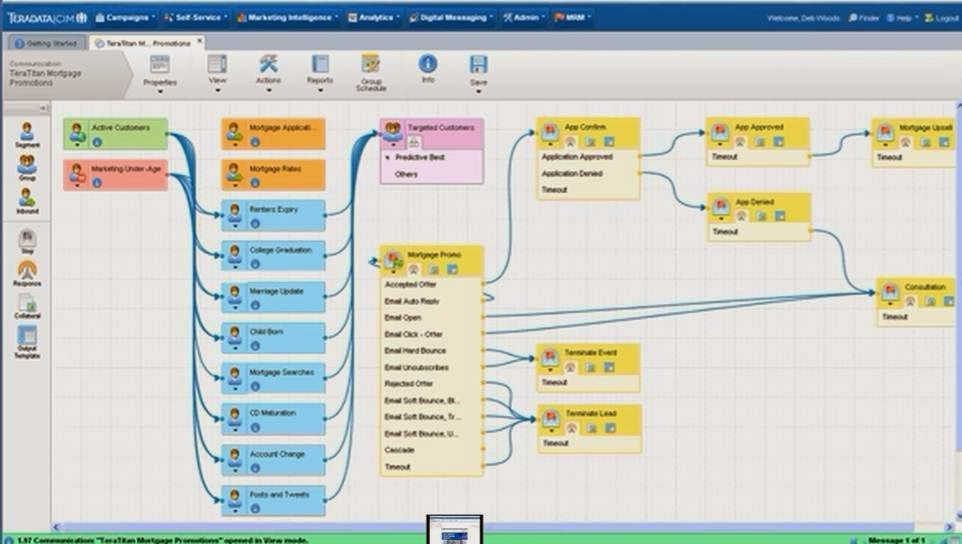I recently caught up with the folks at Teradata, which had its own marketing automation system for a decade before it acquired Aprimo marketing automation in 2011 and added Munich-based email vendor eCircle in 2012. The three products overlapped significantly, especially in campaign management, and it took Teradata a while to sort things out. But as of earlier this year, everything is now marketed as part of a Teradata Integrated Marketing Cloud including Marketing Operations (largely Aprimo’s marketing resource management technology), Campaign Management (the Teradata campaign engine with a sprinkling of Aprimo features and new user interface), and Digital Messaging (based on eCircle). The company also offers a suite of analytic applications for database management and predictive modeling.
The new user interface is the most noticeable change in Campaign Management’s latest release, version 7. But, bright colors and curly lines aside, what distinguishes it from other marketing automation systems is that nodes in a campaign flow can feed in customers from different database segments or Web interactions. Most other systems do this audience definition outside the campaign flow. The Teradata flows do continue with nodes that move through the program after they enter. Users can assign separate paths to different treatment outcomes, such as an email bounce, open, or click, and can merge several paths into a subsequent node. Treatment nodes can be linked to data output templates and content templates, which can include dynamic blocks that are populated in real time when the message is rendered. Rules can limit the combined number of messages sent to each customer across all campaigns, with separate limits for messages of different types in different channels. These are advanced features for consumer marketing automation and almost unheard of in B2B systems.
Beyond the campaign interface, Teradata builds on its traditional strengths in data management and analytics. It provides unified access to digital and offline data, automated predictive modeling, cookie-free Web behavior tracking through an alliance with Celebrus, user-defined response measures, posting of Twitter comments to customer profiles, and “extended” data tables that draw from multiple sources. Users can create emails and landing pages and preview how they would appear on different devices, although the system-generated contents don't automatically reformat the outputs to fit the viewing platform (a.k.a., "responsive design"). The system can deliver emails and support real time interactions across other channels. Messaging and real-time interaction are software-as-a-service only, while other components can run on-premise or be hosted by the vendor. The system can run on SQL Server as well as Teradata’s own database, and can interact with data stored in Oracle, SQL Server, and Teradata.
The Marketing Operations and Digital Messaging components of Teradata’s Marketing Cloud are similarly advanced. The company this week announced enhancements to both, including new interfaces, collaboration tools, a central repository for marketing assets, and tighter integration with Campaign Manager. The underlying theme is providing a more comprehensive, shared view of customer behaviors across all channels and connecting marketing costs with results to enable more accurate return on investment calculations.
All of this doesn't come cheap: Teradata aims at clients with at least $500 million revenue and sets is prices accordingly. But large, sophisticated marketing organizations that need a large, sophisticated marketing system should keep Teradata on their list of options.



![[Research Round-Up] The Latest From NetLine On B2B Content Consumption](https://customerthink.com/wp-content/uploads/email-g56aa02a47_1280-pixabay-email-marketing-218x150.png)
